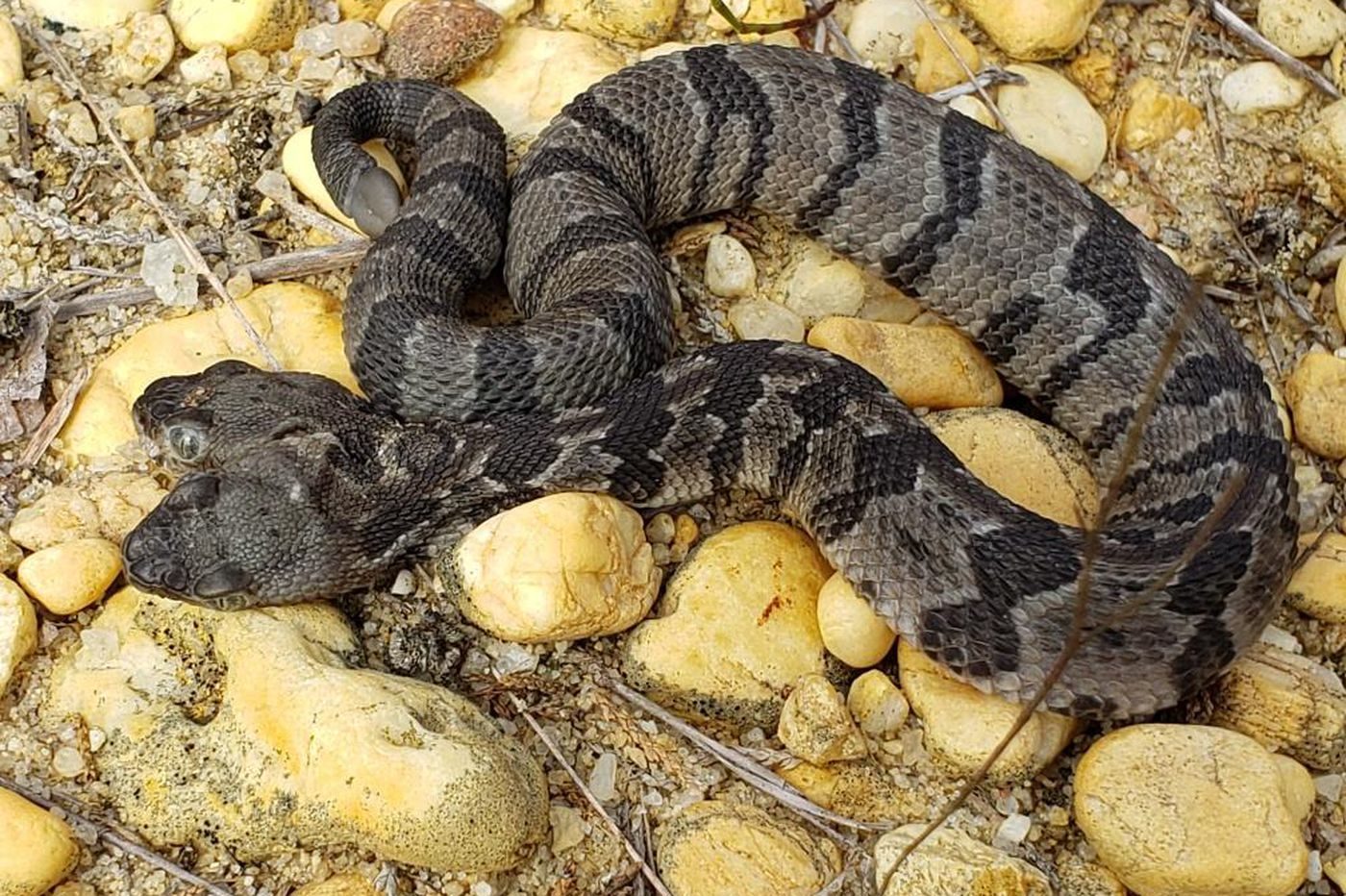
© DAVID SCHNEIDER / HERPETOLOGICAL ASSOCIATES INC.Two-headed timber rattlesnake
David Schneider and Dave Burkett were out in the field this week scouring New Jersey's pine barrens for timber rattlesnakes, one of the state's most endangered species. But what the two herpetologists found was much more rare: a two-headed timber rattlesnake.
"I've been doing this professionally for 19 years," said Schneider, who lives in Pennsauken, "and I've never seen this before. It's really rare. Every once in a while, you'll hear a story about a two-headed snake, or see something online. But it's not common at all."The two men work for Herpetological Associates Inc., a Pemberton-based consulting firm that provides experts for habitat evaluations or wildlife surveys.
Burkett first spotted the snake and called out to Schneider. Their discovery was reported in the
SandPaper, a newsmagazine of Long Beach Island.
"We know the areas where timber rattlesnakes give birth," Schneider said in a phone interview Friday. "And so we went to one area just to check it out. And, sure enough we found a spot where a female had just had a litter of babies."
The men got permission from the New Jersey Department of Environmental Protection to remove the snake and take it back to their office.
"There's a good chance it wouldn't survive in the wild," Schneider said. "It's only maybe a week or so old."
He said although the heads appear to be normal with tongues flicking, one head seems to be more dominant than the other.
"You'll see it crawl along and one head will try to go one way while the other head will try to go the opposite way," Schneider said. "And then the snake will stiffen up. It's almost like it's fighting itself."
Schneider also said that it's unknown whether the snake's internal organs are mingled, or even if the esophagus is connected correctly. None of that will start to become apparent until after the snake starts eating, which won't happen until it's shed its first skin. Then, it will be given live mice bred for such feedings. Right now, it is only able to drink.
New Jersey's timber rattlesnakes are few in number, preferring remote areas of the state. They have been killed by humans who collect and sell them. They are protected under the state's Endangered and Nongame Species Program.
Development has also destroyed much of their habitat.
Rattlesnakes have a low reproduction rate, making their survival even more precarious. Females reach maturity at a relatively late age and reproduce only every three to four years. Initially, their litters are small. But, as they grow, females can give birth to as many as 15 young, though chances are only about one-half to two-thirds of the young will survive their many predators. The ones that do survive, can live for 25 years.
As a result, Schneider would not disclose their location, though the
SandPaper reported it as within Woodland Township, Burlington County.
Timber rattlesnake can be difficult for amateurs to identify as their colors vary. They go through two phases of color: yellow or light; black or dark.
The DEP cautions anyone spotting a timber rattlesnake to keep a distance of at least 15 feet. Observers can submit a Rare Wildlife Sighting Report Form to help the state keep track.
The snakes are venomous, but will usually only strike when provoked.

Reader Comments